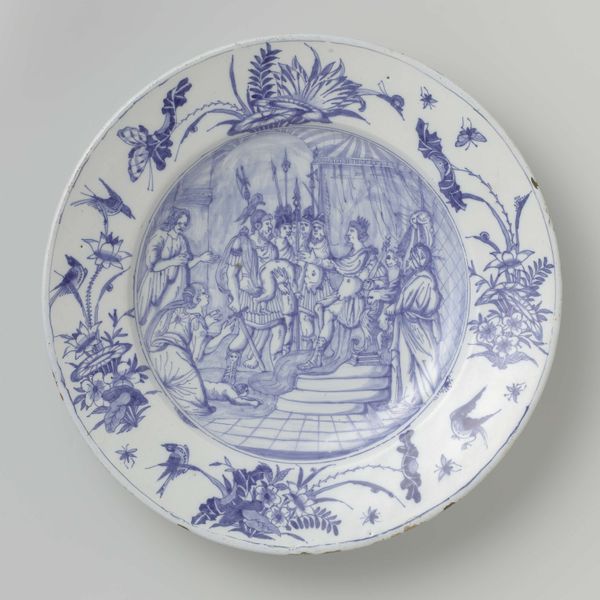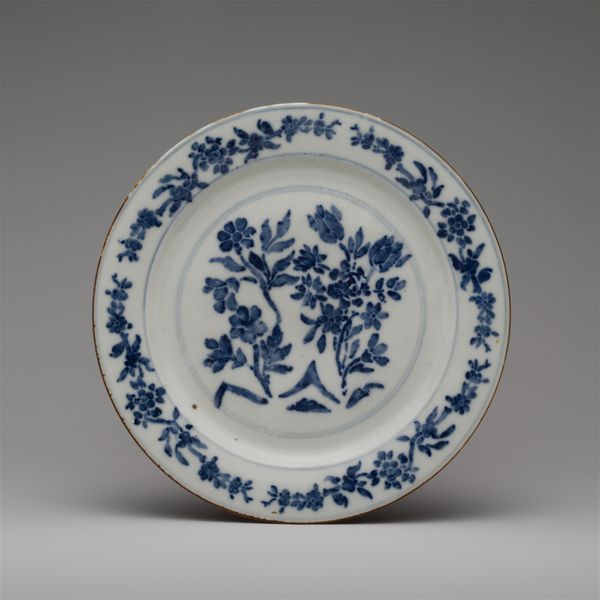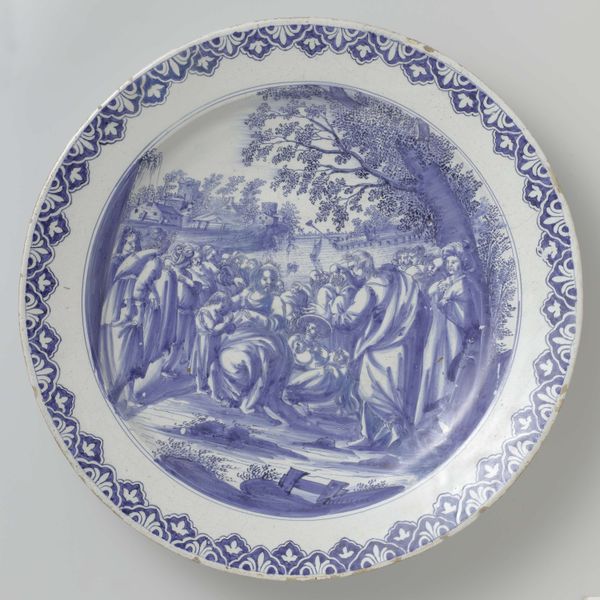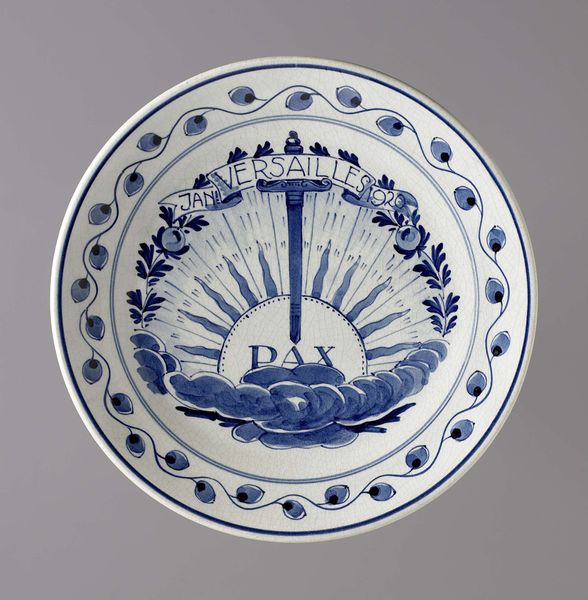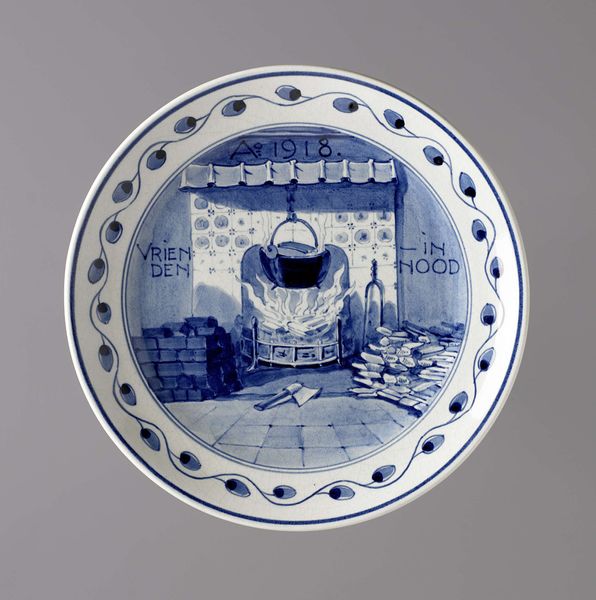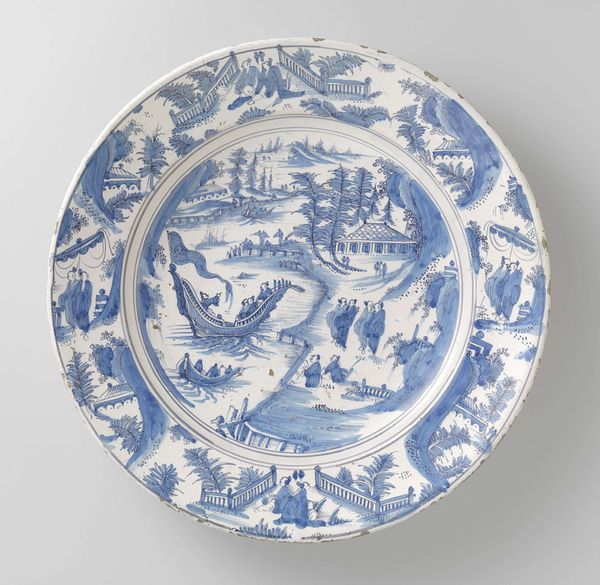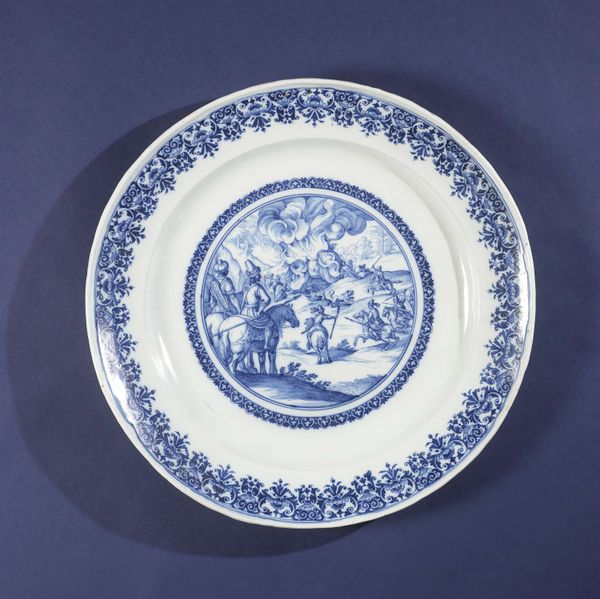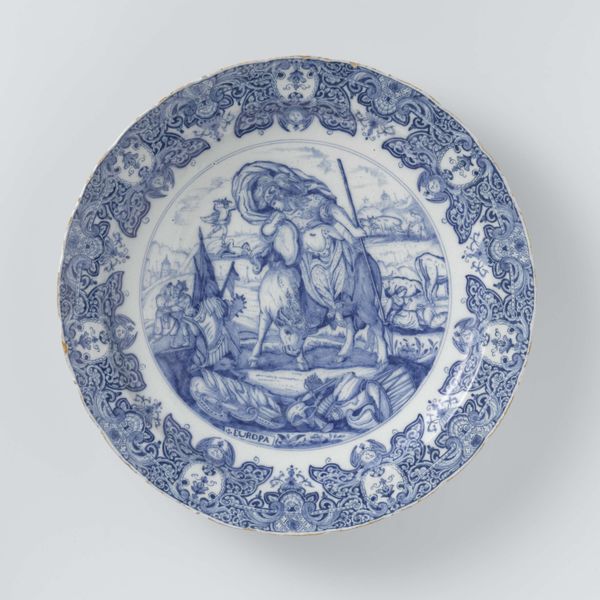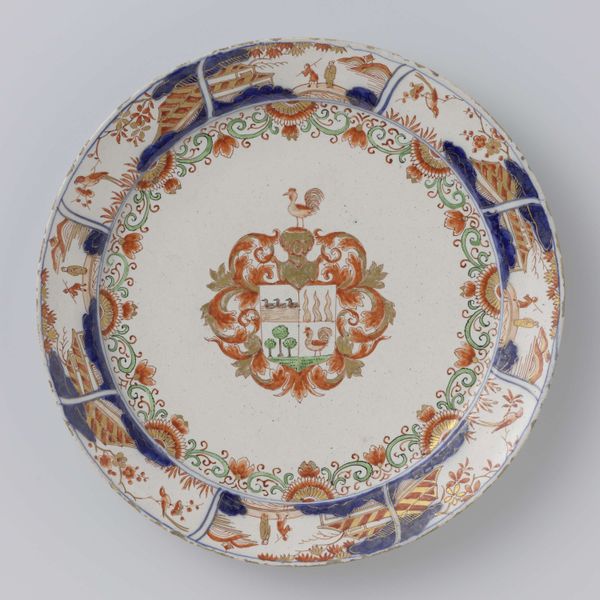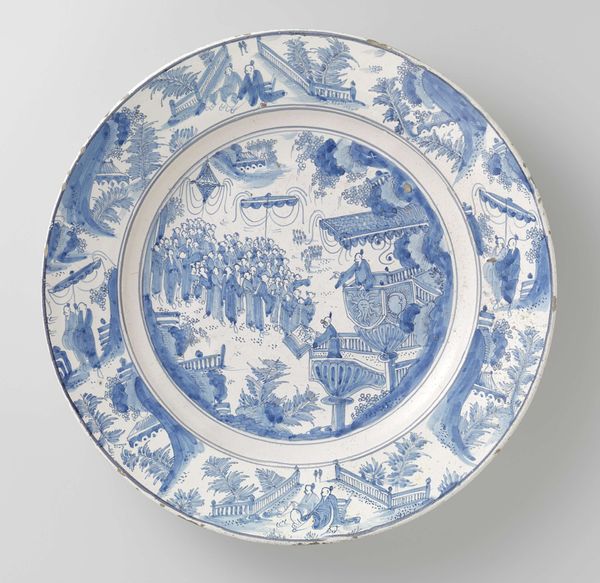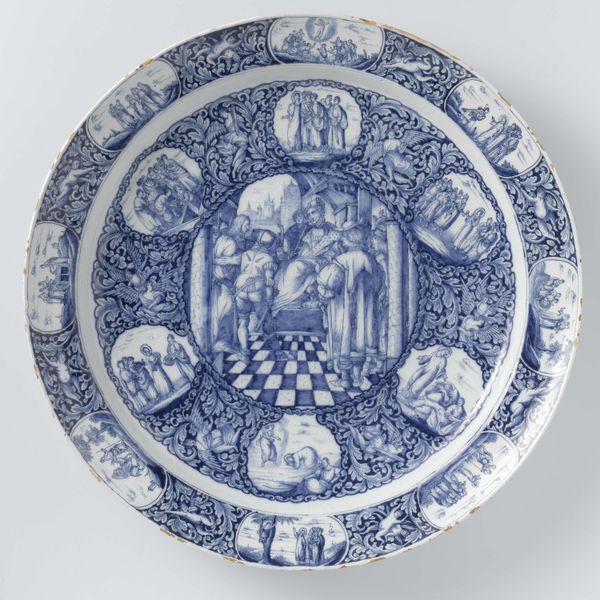
drawing, painting, ceramic, earthenware
#
drawing
#
dutch-golden-age
#
painting
#
ceramic
#
earthenware
#
folk-art
#
decorative-art
Dimensions: diameter 17.9 cm, height 2.2 cm
Copyright: Rijks Museum: Open Domain
Curator: This Delftware plate, titled "Dat Eyken de roem van Henley wordt", was crafted circa 1920-1921 and resides here at the Rijksmuseum. Notice the typical blue and white palette of Delftware, applied to earthenware. Editor: Immediately, I’m struck by its charming simplicity. It’s not aiming for realism, but a kind of heartfelt, symbolic expression. The bold blues are so vibrant. Curator: The decoration employs folk-art motifs within the decorative art tradition. Central is the oak tree rooted in stylized waves, surmounted by crossed oars and radiant lines, with an inscription curving around it. Editor: Indeed, the composition emphasizes the symmetry – the balanced tree mirroring the crossed oars above. Could that central image – the tree, the oars – be a rebus? An emblematic play on words, visual and verbal? Curator: Quite possibly. The inscription "Dat Eyken de roem van Henley wordt, moet toch op een Delftsch bord," translates to "That Henley's glory is oak, must yet on a Delft plate be." This commemoration highlights how national identity could become entangled with events in other European localities, creating moments to publicly promote belonging through locally-made, everyday items. Editor: Interesting that it immortalizes, celebrates even, the English town of Henley here on Dutch earthenware! Look closely, and it is July 2, 1921. Why this event at Henley in particular, and its translation onto this plate? The tree rooted in the sea emphasizes that sense of reaching abroad, perhaps. Curator: Consider the Dutch tradition of maritime engagement, the global nature of mercantile culture at the time; sport too helped in the dissemination of cultural awareness as objects connected to certain competitions gained traction with international markets, as did teams. What more common and resonant form, though, than the making of Delftware commemorative pieces during the late 19th and early 20th centuries? Editor: A fascinating collision of local artistry and international reference points. This plate isn’t just a functional item; it embodies an intricate dialogue about place, identity, and representation. Curator: Indeed, it urges us to see beyond the familiar surface and decode the network of references embedded in the seemingly simple artwork. Editor: It shows how we make things local even when reaching far beyond borders! I’ll certainly think differently about Delftware now.
Comments
No comments
Be the first to comment and join the conversation on the ultimate creative platform.
